When visiting the United Kingdom for an extended period, you must visit all four countries to get a complete picture of the places that make up the UK. In the west of the UK, Wales is an incredible country filled with breathtaking natural landscapes, world-famous beaches and vibrant cities.
The Welsh have their language, Cymraeg, which only a tiny percentage of the population is fluent. The longest place name in the world is in Wales and is written in Cymraeg. Llanfairpwllgwyngyllgogerychwyrndrobwllllantysiliogogogoch translates to ‘St Mary’s Church in the Hollow of White Hazel near a Rapid Whirlpool and the Church of St Tysilio near the Red Cave’. Unsurprisingly, the town’s name has been significantly shortened by locals.
Wales might be a land filled with natural beauty, but its history equally alluring for visitors. For its size, Wales has more castles than any other country in Europe, including the second largest in the UK, Caerphilly Castle. Wales has many famous links, including the birthplace of author Roald Dahl. Mount Everest was named after Welshman Sir George Everest, a surveyor who mapped the mountain. Here are 20 incredible natural and historical landmarks in Wales not to miss seeing in this proud and beautiful country.
Wales Landmarks
Natural Landmarks in Wales
Natural landscapes are incredibly important to Wales, with 20% of the country covered by spectacular national parks filled with mountains, rivers, lakes and remnants of ancient civilisations.
1- Snowdon
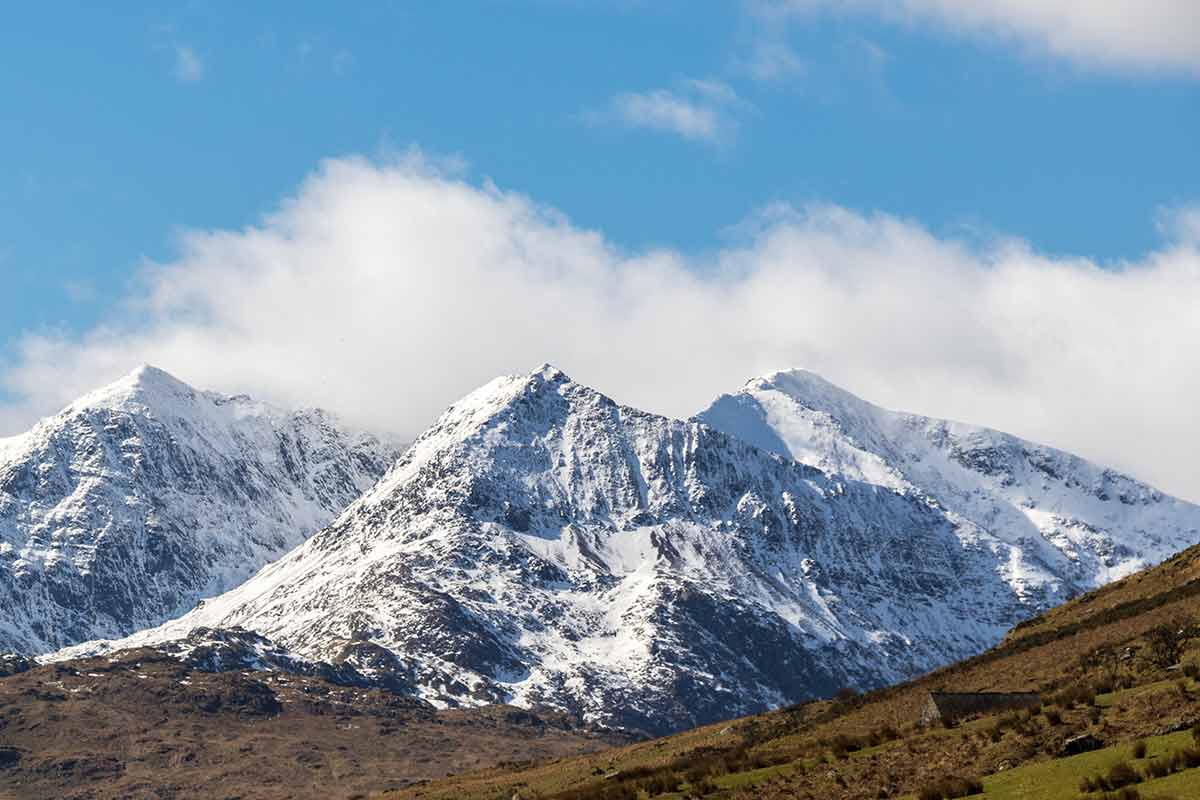
Snowdon is Wales’ highest mountain, standing 1085m (3560ft) above sea level.
Volcanic eruptions millions of years ago gave birth to Snowdon, and its shape and surrounding landscape have evolved through glaciers forming and melting.
From the summit of Snowdon, you can see views of Snowdonia, Pembrokeshire and even Ireland.
Snowdon’s summit can be reached from 6 different paths, offering varying levels of difficulty for hikers.
The mountain has a range of biodiverse plant and animal life that are carefully observed and maintained by the national park.
Snowdon is at Snowdonia National Park, LL55 4UL.
2- Cwm Idwal
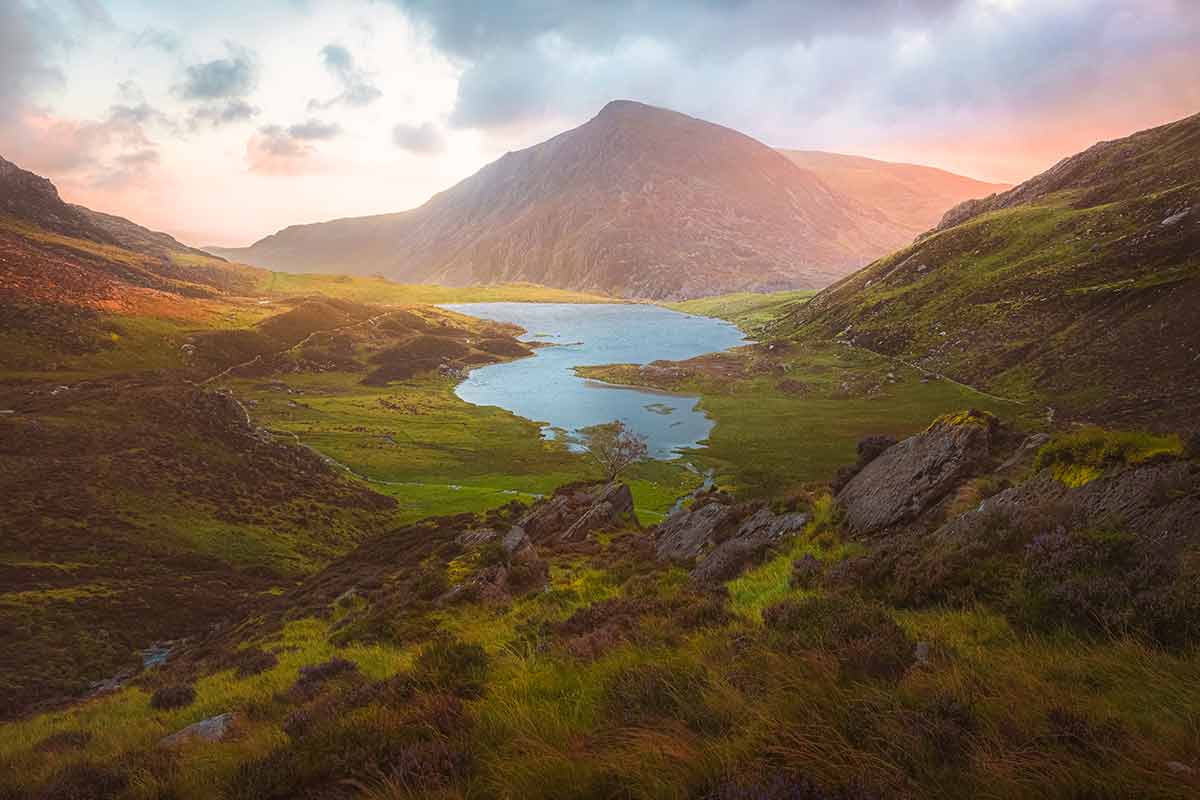
Cwm Idwal is a glacial valley in Wales sculpted through the Glyderau mountains over centuries thanks to melting and forming ice.
Cwm Idwal is a bowl-shaped hollow surrounding lake Llyn Idwal.
The surrounding area makes for a pleasant hike through unusual rock formations and unique plant life.
Local legend tells of a 12th-century prince who entrusted his son, Idwal, to a friend.
The friend was jealous of Idwal as his own son was not as clever.
In a rage, the son pushed Idwal into the lake, causing him to drown.
Banishing the friend and son, the prince named the lake after poor Idwal.
According to the tale, birds will not fly over the lake’s surface, and during storms, you can hear a wailing cry echoing around the Cwm.
Cwm Idwal is at Bethesda, Bangor, LL57 3LZ.
3- Swallow Falls
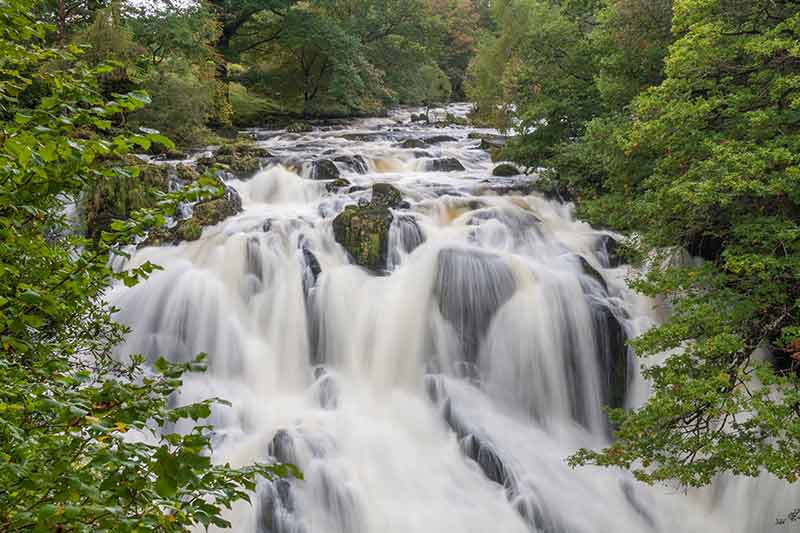
Swallow Falls is 42m (138 ft) high, is fed from the river Llugwy and flows through a narrow chasm surrounded by birch and beech trees.
The falls are the largest continuous falls in Wales, and there are many ways to access the falls.
There are hiking trails offering a range of difficulty, with the route offering the best views available on the north bank.
The falls have been open to the public since 1913 and became popular with writers and poets.
Swallow Falls is at Snowdonia National Park, Betws-y-Coed, Conwy, LL24 0DW.
4- Llanddwyn Island
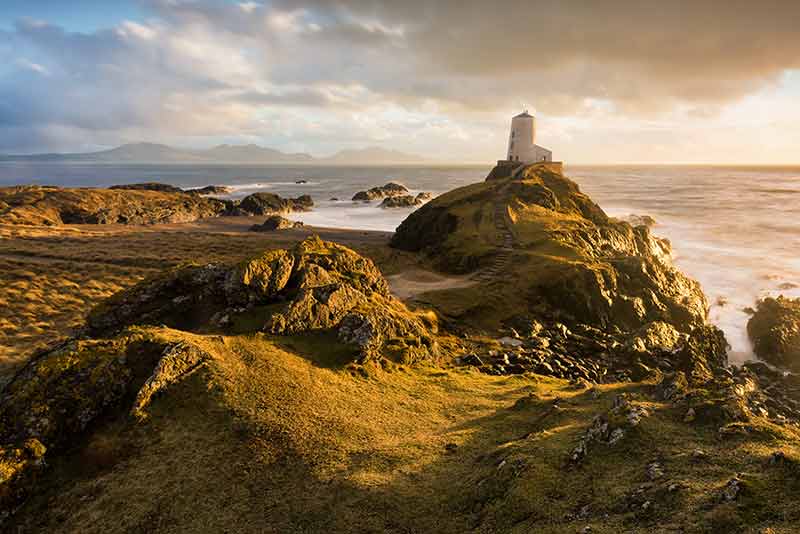
Llanddwyn Island is a small tidal island in Newborough Warren, inadmissible on foot during high tide.
The island is within Newborough Warren National Nature Reserve, making it a pleasant sight for a walk and picnic.
The island is dotted with bluebells and yellow horned poppies.
A wide variety of seabirds nest on the island, including cormorants and oystercatchers.
The island features runes, rocky outcrops overlooking the sea, and some historical buildings.
Visit the Tŵr Bach and Tŵr Mawr lighthouses, which have guided ships into the Menai Strait since the mid-1800s.
Llanddwyn Island is at Newborough.
5- Cregennan Lakes
Cregennan Lakes lies on the northern slopes of Cader Idris and consists of two lakes 800ft (244m) above sea level.
The large lake covers approximately 27 acres and has a small island, while the smaller lake covers 13 acres.
The best view of the lakes is from the top of Pared y Cefn Hir, which also has views of the surrounding mountains and estuaries.
The lakes are famous for fishing, with both lakes offering wild brown trout and rainbow trout.
The lakes are owned and cared for by the National Trust.
Cregennan Lakes is in Southern Snowdonia, LL39 1AX.
For more amazing European Landmarks, read:
- 30 Spain Landmarks
- 20 Switzerland Landmarks
- 22 Germany Landmarks
- 35 London Landmarks
- 30 France Landmarks
- 20 Italy Landmarks
- 20 Greece Landmarks
- 20 Russia Landmarks
- 20 Scotland Landmarks
- 20 Ireland Landmarks
- 21 Wales Landmarks
- 20 Turkey Landmarks
- 20 England Landmarks
- 20 Hungary Landmarks
- 21 Romania Landmarks
- 20 Ukraine Landmarks
- 20 Athens Landmarks
- 20 Rome Landmarks
- 20 England Landmarks
- 20 Portugal Landmarks
- 20 Poland Landmarks
- 20 Iceland Landmarks
- 20 Bulgaria Landmarks
- 21 Croatia Landmarks
- 20 Bulgaria Landmarks
- 20 Austria Landmarks
- 21 Finland Landmarks
- 20 Sweden Landmarks
- 20 Denmark Landmarks
- 20 Belgium Landmarks
- 20 Netherlands Landmarks
- 20 Barcelona Landmarks
- 21 Czech Republic Landmarks
- 20 Landmarks in Paris
- 20 Landmarks in Liverpool
- 10 Istanbul Landmarks
6- Pen y Fan
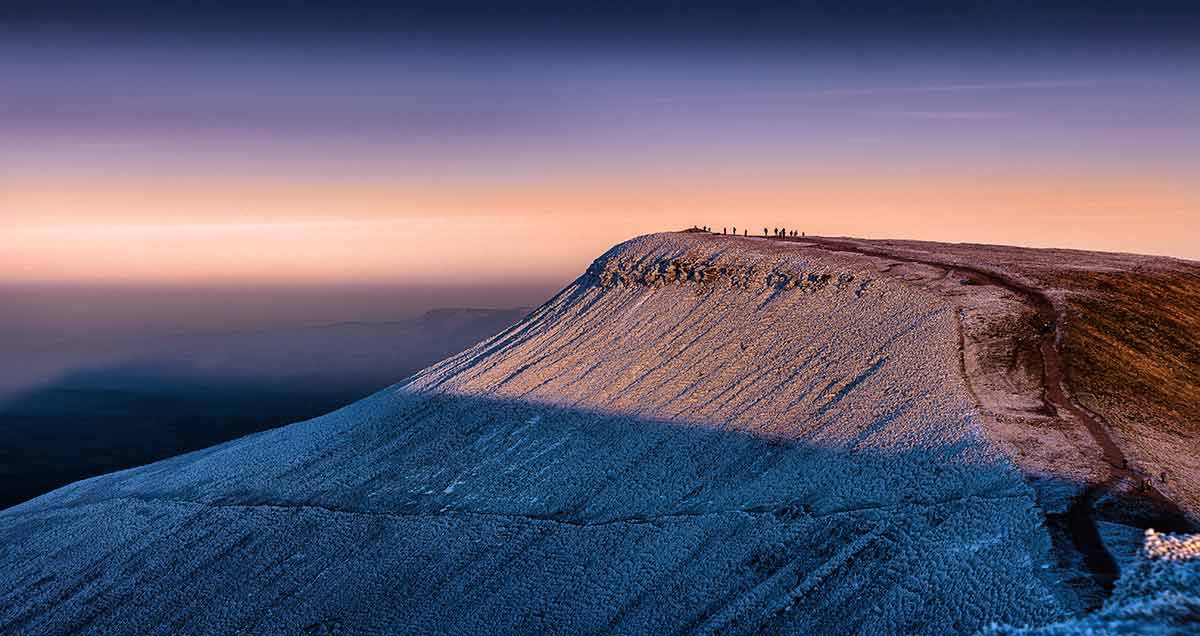
Pen y Fan is the highest mountain in the south of Wales and is nestled within the Brecon Beacons National Park.
The summit of Pen y Fan is 886m (2907ft) above sea level.
It’s popular with hikers and is often used by the UK’s Special Forces for training exercises and selection processes.
The peak is owned by the National Trust, which aims to preserve the mountain for future visitors by combatting the erosion the mountain faces from hikers.
The summit features a Bronze Age cairn and stone cist, a feature that has been found on other summits nearby.
Pen y Fan is at Powys, Brecon Beacons National Park.
7- Rhossili Bay
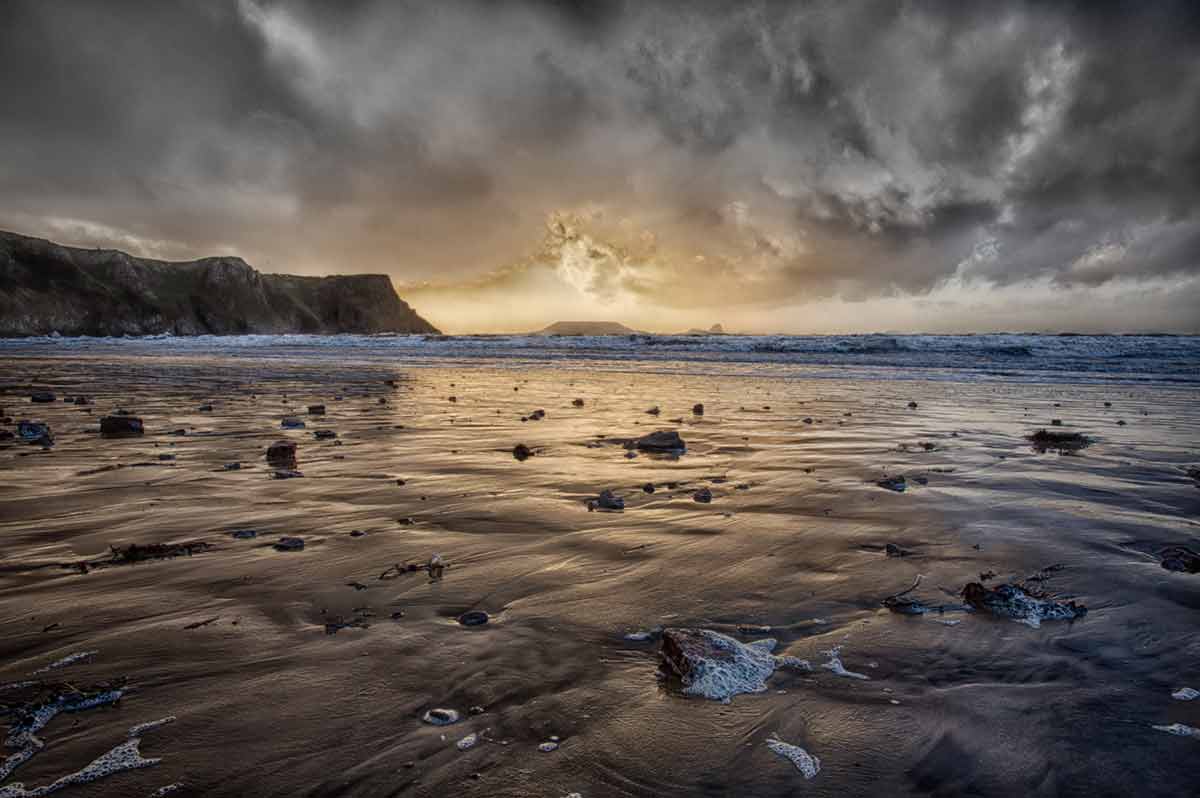
Rhossili Bay is an area of outstanding natural beauty on the southwestern tip of Wales and has twice been awarded Britain’s Best Beach title.
The bay is a three-mile (4.8km) stretch of sandy beach overlooked by grassy cliffs and moss-covered crags.
The beach is vast at low tide, however, during high tide, the tidal island of Worms Head, created from a rock causeway, is seen.
From the bay during low tide, you can see the wreck of the Helvetia shipwrecked just off the bay’s coast in 1887.
Rhossili Bay is at Rhossili, Swansea, SA3 1PR.
8- Skomer Island
Off the coast of Pembrokeshire, Skomer Island has steep coastal cliffs despite only rising 200ft (60m) above sea level.
Skomer Island is famous for its wild inhabitants and is a paradise for birds, such as puffins that nest on the island.
The island’s waters are also home to porpoises, dolphins and Atlantic Grey Seals.
Skomer is also a paradise for wild plants.
During spring, bluebells cover much of the island, making it appear blue on approach.
Boats depart for the island three times a day from the mainland and are dependent on the season and the weather.
Visitor numbers are capped, however, it is possible to stay at one of the islands accommodation sites.
Skomer Island is at Marloes, Haverfordwest, SA62 3BL.
9- Llyn Ogwen
Surrounded by the Carneddau and Glyderau mountain ranges, Llyn Ogwen is one of the most popular lakes in Wales.
One reason why this is a famous Welsh landmark is that, according to legend, King Arthur threw his sword Excalibur into its waters.
The mountains overlooking the lake are Pen yr Ole Wen and Tryfan.
The lake stretches for 1 mile (1.6km) and is shallow, with an average depth of only 3m (9.8ft).
The lake is easily accessible as it follows the path of the A5 road.
There are lots of places to park and get a snack before a gentle stroll to the lakeshore, or for more adventurous visitors, numerous hiking trails lead from the lake up into the surrounding mountains.
Llyn Ogwen is at Llyn Ogwen, A5, Snowdonia National Park.
Historical Landmarks in Wales
10- Caerphilly Castle
Lord Gilbert de Clare began building Caerphilly Castle in 1268.
Little did he know the castle would be the largest in Wales and the second-largest in the United Kingdom behind Windsor.
The purpose was to defend against Llywelyn ap Gruffudd, a powerful Welsh prince.
It has high walls, towers and water defences that held out against two attacks by the prince.
It later became a home complete with hunting grounds and a lake. The leaning tower is a quirky feature the locals love.
Caerphilly Castle is at Castle Street, Caerphilly, CF83 1JD.
11- Tre’r Ceiri
Tre’r Ceiri (or ‘town of giants’) is an Iron Age hill fort on the slopes of the Yr Eifl mountain.
This Welsh fort is one of the best-preserved examples of Iron Age settlements in Britain and has impressive stone ramparts.
During its heyday, the town had more than 150 stone houses, and you can still see the walls of some of these homes today.
The site was extensively excavated in the early 1900s and again during the 1950s, when archeologists discovered numerous artefacts, including pottery, beads and iron tools.
A gold plated broach featuring elaborate decoration and dating back to the 1st century was discovered during one excavation and is now on display at the National Museum in Cardiff.
Tre’r Ceiri is at Llanaelhaearn, Caernarfon, LL54 5AY.
12- Pontcysyllte Aqueduct
Thomas Telford and Williams Jessop designed and built Pontcysyllte Aqueduct in 1805.
The aqueduct is the longest in Britain and made from cast iron, stone and has 18 arches.
Pontcysyllte translates to ‘the bridge that connects and aqueduct allows visitors two options to cross over.
Firstly, a path runs along the aqueduct, which offers a pleasant stroll with incredible views over the parkland and rivers.
Secondly, visitors could hire a small boat or canal boat to sail at a more laidback pace over the aqueduct.
Pontcysyllte Aqueduct is at Station Road, Llangollen Canal, Wrexham, LL20 7RH.
13- South Stack Lighthouse
Trinity House built South Stack Lighthouse in 1809 on a small islet off the coast of Anglesey.
The lighthouse tower is 28m (91.8ft) high, with breathtaking views over the landscape surrounding it from the top.
The lighthouse was manned and ran using oil lamps for 100 years before transitioning to incandescent lights. It became fully automated in the mid-1980s.
The lighthouse can be accessed by bridge from the mainland and offers a visitor centre and guided tours.
South Stack Lighthouse is at South Stack, Holyhead, LL65 1YH.
14- Powis Castle
Powis Castle is a medieval castle famed for its vast and extravagant gardens.
Welsh prince Gruffudd ap Gwenwynwyn built the castle during the 13th century to show his enemies his independence.
The castle was destroyed in 1274 by another Welsh prince.
It was rebuilt and handed over to the National Trust after centuries of being in the hands of the earls of Powis.
The gardens date back more than 300 years and are a mix of manicured topiary, dramatic terraces and delicate floral borders.
Powis Castle is at Welshpool, SY21 8RF.
15- Devils Bridge
Devils Bridge is a series of three bridges built, one on top of the other, over a waterfall.
The original bridge was built during medieval times, while the second bridge was constructed above the original in 1753 when it was deemed unstable.
Instead of knocking it down, the builders used the original to support the scaffolding of the second bridge.
The last bridge went up in 1901.
Devils Bridge is the only example in the world where three bridges are stacked in such a manner.
The bridges impacted the local area so strongly that the village they connect to took this as their name.
The waterfall and bridges were written about during the 18th century by William Wordsworth.
Devils Bridge is at Devils Bridge, Ceredigion, SY23 3JW.
16- Pentre Ifan
Pentre Ifan, or Johns Village, is a well-preserved neolithic dolman and a must-visit historical landmark in Wales.
Pentre Ifan consists of seven principle stones. The largest stone is the capstone which is 5m (16ft) in length.
The dolmen dates back to 3500BC and was a burial ground.
The seven stones would have acted as an entranceway and roof over the burial ground, which was built up with a mound of smaller stones.
The site is free to enter and offers an unusual landmark in Wales to visit, learn about and explore pleasant walks in the surrounding areas.
Pentre Ifan is at Nevern, Newport-Trefdraeth.
17- Cardiff Castle
Cardiff Castle sits in the capital of Wales and follows more than 2000 years of history within the city.
Romans first built the castle during the 1st century as a series of forts.
Normans constructed a keep during the 11th century, which is still part of the castle today.
Following further transformations over the centuries, the castle remained much the same as it was during the 19th century when it was transformed into a Victorian Gothic home.
The castle walls were used as air-raid shelters during World War II. A replica is available for exploration today.
Cardiff Castle is at Cardiff Castle Grounds, Cardiff, CF10 3RB.
18- St David’s Cathedral
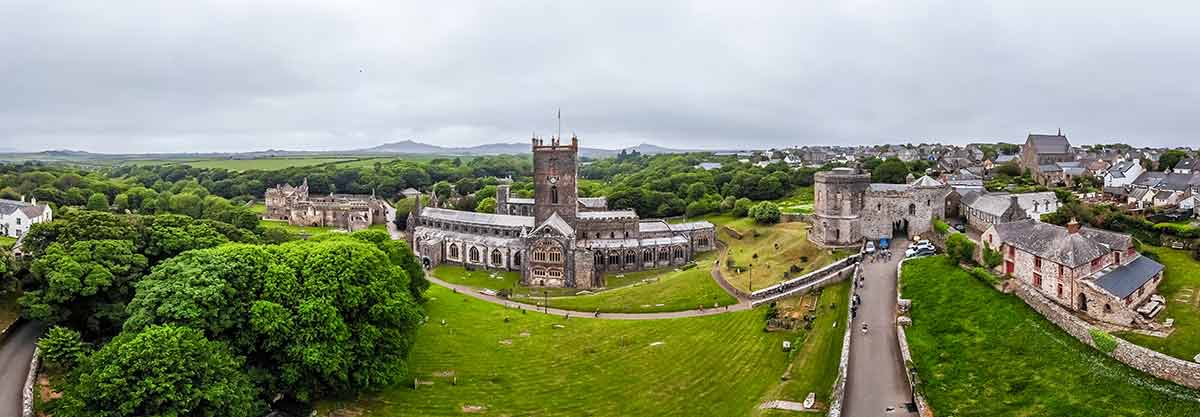
St David’s Cathedral has stood on the same spot since the 6th century.
The cathedral was so crucial to the local area that the city took its name, making it the smallest city in the United Kingdom.
The cathedral has undergone many periods of renovations over the years.
The central tower collapsed twice during the 11th century and required extensive repairs and renovations during the 19th century to enable worshippers a safe place to pray.
Within the cathedral are many statues of St David, the patron saint of Wales, and intricate stained glass featuring the Saint performing miracles.
St David’s Cathedral is at 5A The Peebles, St Davids, SA62 6RD.
19- Ffestiniog Railway
The Ffestiniog Railway runs through 40 miles (64.3km) of the Snowdonia National Park.
This historic landmark of Wales meanders through ancient woodland, along the coast, and past ruined castles.
Ffestiniog Railway has 200 years of history and is the UK’s longest-running heritage railway.
Passengers can sit in beautifully restored carriages, including a luxurious first-class Pullman carriage, while being pulled by a steam engine.
If seated in first class, passengers can dine on exquisitely prepared dishes, afternoon tea, or luxurious dinners if travelling in the evenings.
Ffestiniog Railway is at Harbour Station, Snowdonia National Park, Porthmadog, LL49 9NF.
20- Bodnant Garden
Bodnant Garden is a stunning botanical garden operated by the National Trust.
Henry Davis Pochin, a chemist from Leicestershire, founded the garden in 1874 after purchasing the Georgian manor house on the land.
Five generations of the family have continuously developed the gardens, which now cover 80 acres with incredible landscape architecture.
Bodnant Gardens includes Italian style terraces, a waterfall, numerous native and rare trees, and more recently, a woodland area and meadow.
Bodnant Gardens is at Tal-y-Cafn, LL28 5RE.
21- Conwy Castle
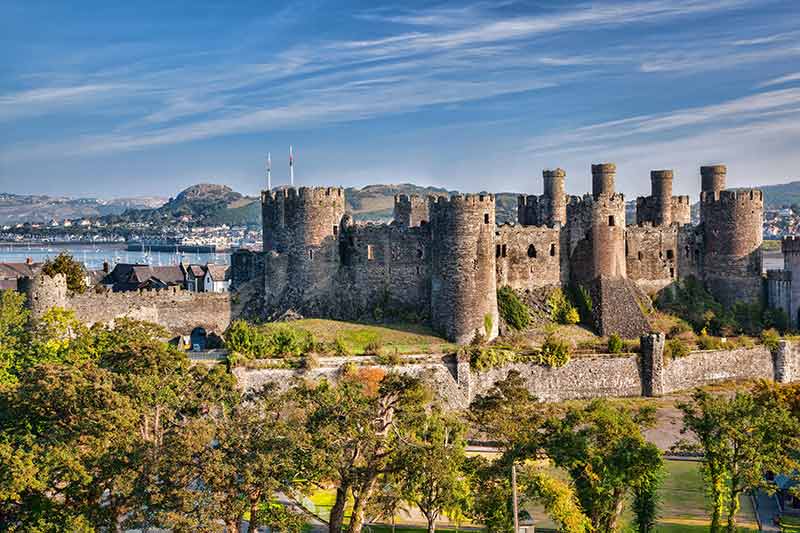
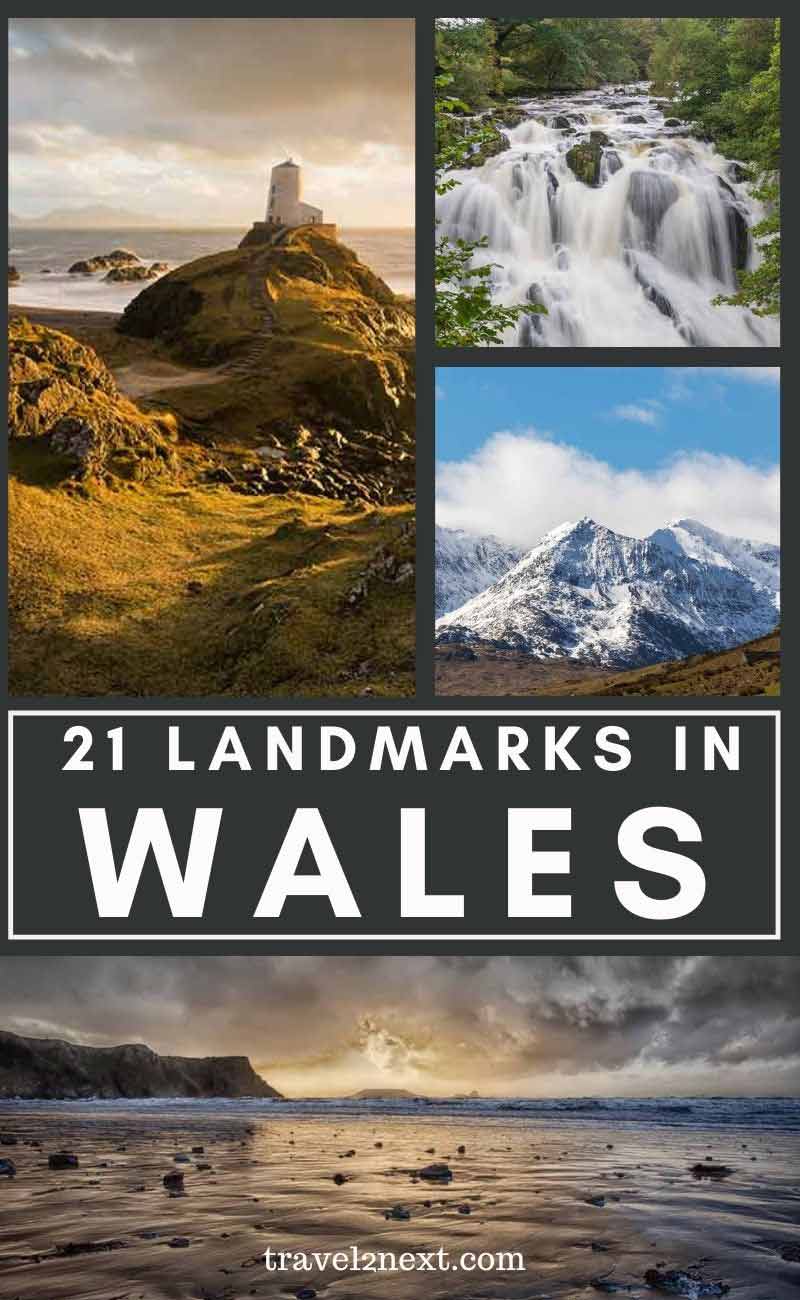
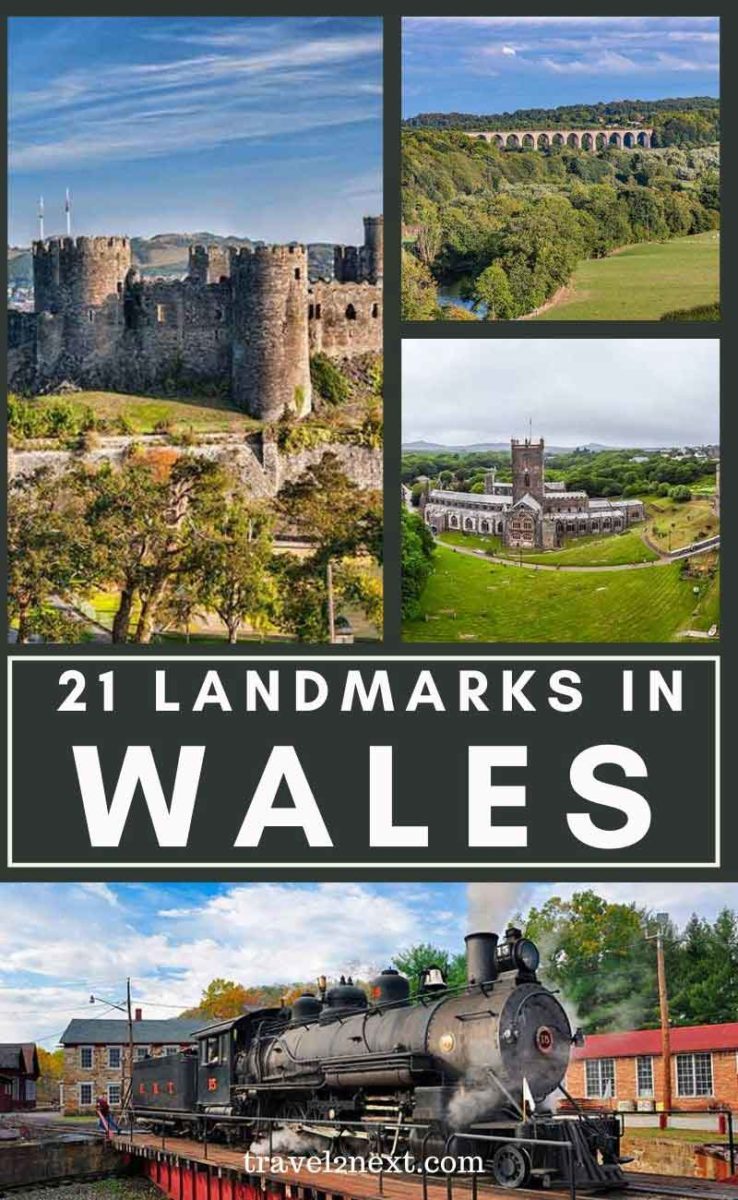
Plan Your Trip

Rent A Car – Find the best car rental rates at Discover Cars. They compare car hire companies to provide you with the best deal right now.

Find A Hotel – If you’re curious about this article and are looking for somewhere to stay, take a look at these amazing hotels.

